Last week I was lucky enough to visit Francois Freres cooperage in Saint-Romain, a small village in Burgundy France.
My visit was arranged with the help of Moke from Mel Knox Barrles, the San Francisco based barrel broker for Francois Freres and others. Thank you Moke.
Winding my way up the narrow curvy road to Saint Romain with my brother, I could not help but wonder why they chose to establish the cooperage in such a remote location. We had to pull over to the side of the road every time a small truck passed by and I wondered how bigger trucks, which carry thousands of barrels a year from the cooperage, got through. The answer to that came a bit later from Gregory, my gracious tour guide at Francois Freres.
Arriving at the cooperage one first notices the wonderful smell of freshly baked bread, the barrel toasting room is right up front, for all to see and smell.
We started at the yard, where logs purchased at auction from ONF (the French government agency responsible for french forests) lay down waiting their turn to be hand split.
Greory pointed out the importance of tight wood grain, the primary consideration when bidding on logs at auctions. Here the smell is vastly different, natural oak, strong and spicy.
The logs are cut to various lengths, one meter primarily for the 228 liter barrels, 1.05 for 300 liters etc.
The logs then make their way to the splitting specialist, who after years of practice, can balance splitting staves with the tightest grain while optimizing the amount of wood used. According to Gregory, only about 20% of each log can be used for barrels. The rest is used for heating the cooperage, for fire for shaping the barrels and for fire for toasting the barrels. We visited during the “Great Cold’ of Europe, 24 degrees Fahrenheit, so we were thankful for said heating.
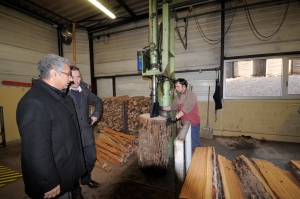
Hand splitting logs
After splitting, the staves are shaved and stacked in a criss cross manner to allow air to circulate and then moved out to the yard again for 2-3 years of air drying, or seasoning.
During this air drying time, the staves lose about 80% of their weight from water loss; harsh green tannins leach out and the wood gets ready to be shaped into barrels.
A special laser-guided saw trims each stave to a proper curve to allow it to fit to snugly to its neighbor when the staves are put together to form a barrel. One wide, one narrow, are put in layers next to each other where each layer will form one barrel later on.
In the barrel forming area, all the staves that form a barrel are connected together, by hand, using temporary hoops. Water is sprayed and the wood is heated up to allow it to bend into shape. Hoops are pushed down the ‘skirts’ as the wood becomes more pliable to form the barrels. The fire you see in this picture is for forming purposes, toasting comes later.
Toasting the barrels must have been the best job on the day we visited, the temperature outside was 24F. We landed on what the French call the “Grand Froid.” All of Europe was frozen.
I asked Gregory if they have a set time or a formula for the various barrel toast options available, Medium toast, Heavy toast, Long Toast etc. This is where he said he chuckles when he hears other coopers describe in exact minutes and degrees each toasting level. It is impossible, he said, because the wood can be drier or more humid, depending on where it was in the stack, humidity that day, or the exact heat of the fire can be different–they can’t be that exact. That is why we have Frederic he said, after years of toasting, he can tell by smell and looks exactly when to pull a barrel off the fire. Talk about hand crafted barrels, it is an art indeed.
Each barrel is made to order with the various factor combinations, wood origin, drying time, toast level, head toast, chestnut or metal hoops, engraving etc. Then there are some American wineries who buy their own wood in order to maximize the euro exchange rate. Mind boggling.
After toasting, the heads are fitted in and the permanent hoops are put on. Again, a cooper whose sole task it is to maximize wood selection for the heads is busy matching head staves.
Heads are fitted to the barrels and where the groove and the head meets the barrel is sealed with a special paste made of fine wood shavings, water and flour. This was fine for about 90 years until recently concerns were raised about gluten ending up in the wine. Francois Frere was ready with an alternative solution due to a request from a Golan Hights winery in Israel, not to use flour in the paste so they can have a kosher for passover wine.
The barrels are wetted with water and pressure is applied to test for leaks. Here, Gregory points out the heads lowering as the pressure is released.
Logo engravings by a laser follow suit and the barrels are wrapped and placed in a conditioned storage room, ready to be shipped around the world.
So, I asked Gregory, why Saint-Romain? Isn’t it difficult for trucks to get in and out, a bit out of the way?
His answer basically came down to Terrior. The weather in Saint-Romain facilitates air drying of the wood in a unique way, which contributes to the final wine characteristics. So much so, that they have conducted a blind wine tasting where the only difference was the location of the wood drying (they have a Bordeaux location) and could tell the difference. With such attention to details and super craftsmenship, no wonder the top domains of Budgundy are all using Francois Freres barrels.
We are glad to be in that company.
Of course, being in Burgundy and getting close to lunch my gracious hosts could not help but open a bottle of a 2007 Chassagne Montrachet 1er Cru les Chenevottes, made especially for Monsieur Francois by one of his local barrel customers. A perfect ending for a perfect tour.
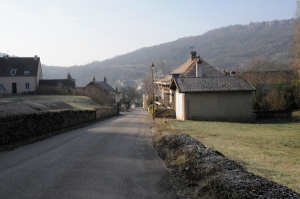
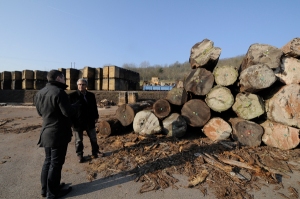
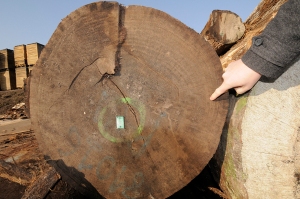
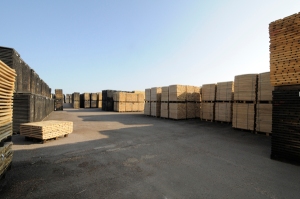
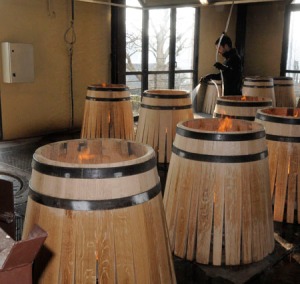
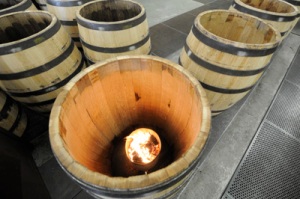

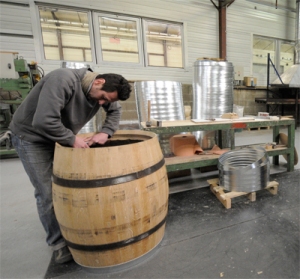
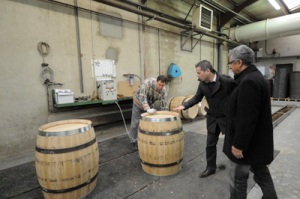
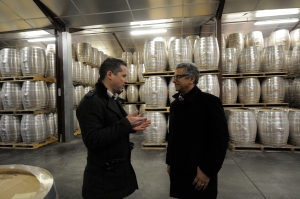
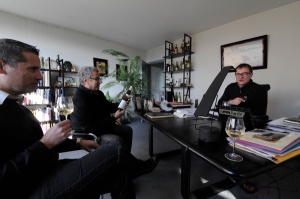
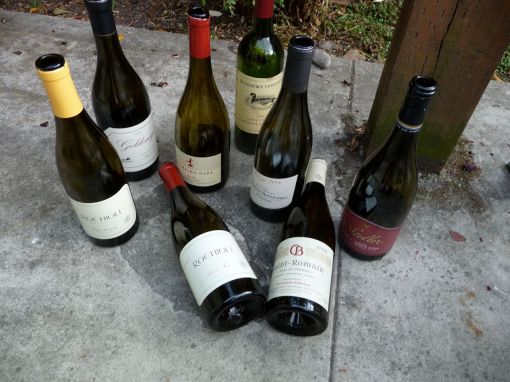
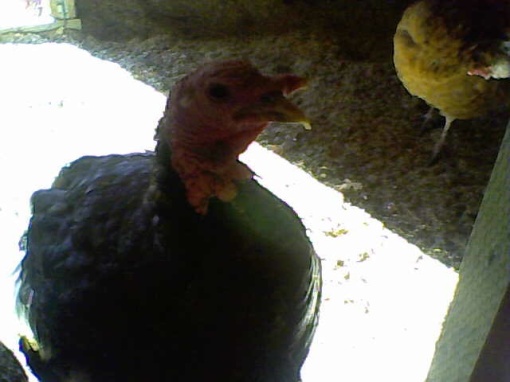
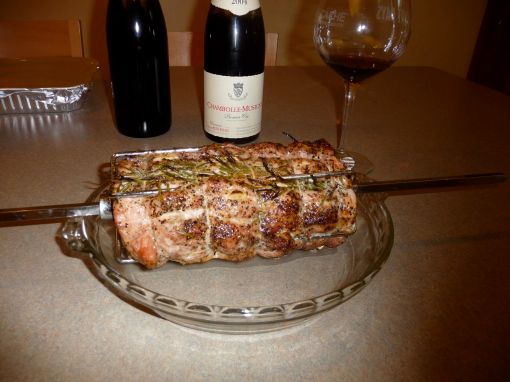
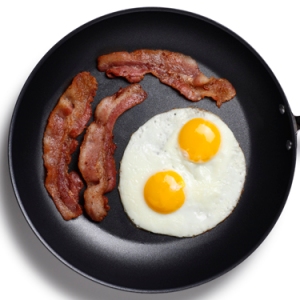
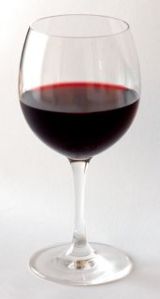
 I won’t go into the reasons but I want to let you know that amidst what has become a daily barrage of economic and financial bad news, it was a pleasure to receive a bit of good news in this month’s newsletter from Kermit Lynch in Berkeley, CA.
I won’t go into the reasons but I want to let you know that amidst what has become a daily barrage of economic and financial bad news, it was a pleasure to receive a bit of good news in this month’s newsletter from Kermit Lynch in Berkeley, CA. 

